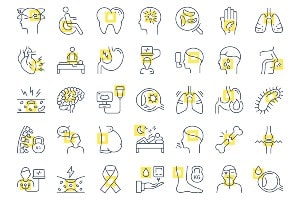About Antro-duodenal Motility Study

Learn about the disease, illness and/or condition Antro-duodenal Motility Study including: symptoms, causes, treatments, contraindications and conditions at ClusterMed.info.
Antro-duodenal Motility Study

| Antro-duodenal Motility Study |
|---|
Antro-duodenal Motility Study InformationAre there any alternatives to an antro-duodenal motility study?Other tests can help with the evaluation of motility disorders, including upper gastrointestinal X-rays, gastric emptying studies, and electrogastrograms. The most recent device for determining gastrointestinal motility is a radiotelemetry capsule (Smartpill) that senses the pressure generated when the stomach or intestinal muscles contract around it. The capsule is swallowed, and it then travels through the stomach and intestines. While it is traveling, it continually senses the pressure around it and transmits this information wirelessly to a receiver worn on the outside of the body. Later, the data is downloaded from the recorder and analyzed. Are there any side effects to an antro-duodenal motility study?There are no important side effects; however, the tube can become quite irritating after several hours, giving the patient a sore throat. Occasionally, the tube also causes nasal irritation. Within 24 hours after the tube is removed, the irritation disappears. How are the results of an antro-duodenal motility study evaluated?Normally, there are characteristic patterns of contraction of the stomach and duodenum during fasting periods and after meals. In patients with motility problems of the stomach and/or small intestine, the characteristic patterns are abnormal or completely absent. Such patients may be treated with drugs to stimulate contraction, such as metoclopramide (Reglan). How is an antro-duodenal motility study done?
What is an antro-duodenal motility study?
When is an antro-duodenal motility study used?An antro-duodenal motility study is used to diagnose a motility disorder of the stomach or small intestine, that is, a condition of abnormal function of the muscles of the stomach and/or small intestine. Such abnormal function usually is suspected when there are symptoms and signs of obstruction to or delayed flow of food through the stomach and intestines. These symptoms usually are nausea, vomiting, and intestinal distention (enlargement). The obstruction is a direct result of the inability of the abnormally functioning muscles to propel food through the stomach and intestines. One common cause of motility disorders of the stomach and intestines is diabetes mellitus. |
More Diseases
A | B | C | D | E | F | G | H | I | J | K | L | M | N | O | P | Q | R | S | T | U | V | W | X | Y | Z
Diseases & Illnesses Definitions Of The Day
- Noncancerous Colloid Thyroid Nodule (Thyroid Nodules) ‐ How are thyroid nodules diagnosed?, Introduction to thyroid nodules …
- Skin, Laser Resurfacing (Laser Resurfacing) ‐ CO2 Laser Resurfacing, Complications of Laser Skin Resurfacing …
- Malignant Fibrous Histiocytoma (Bone Cancer Overview) ‐ Are there any treatments or medications that relieve bone cancer pain? …
- Double Vision ‐ Is it possible to prevent double vision?, What are the symptoms and signs of double vision? …
- Ageusia (Taste Disorders) ‐ Are taste disorders serious?, Can taste disorders be treated? …
- Autism Screening and Diagnosis ‐
- Alpha-fetoprotein Blood Test ‐ In which situations are high blood (serum) levels of AFP used as a tumor marker? …
- Polymyalgia Rheumatica ‐ How do health care professionals make a diagnosis of polymyalgia rheumatica? …
- Stump Appendicitis (Appendicitis) ‐ Appendicitis definition and facts, Are there long-term consequences of appendectomy? …
- Gonorrhea (Gonorrhea In Women) ‐ Gonorrhea facts, How is gonorrhea diagnosed?, What are sexually transmitted diseases (STDs)? …